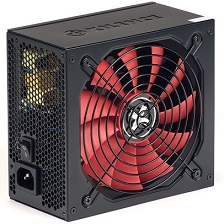How to build a computer for beginners
Greetings, dear readers. Surely there are people among you who are planning to buy a computer in the near future. So I decided to write a small series of articles on how to build a PC for beginners and how to choose the optimal components based on your needs. It’s not about the physical assembly process itself, but about how to assemble the optimal configuration.
To prevent the article from being huge and difficult to read, I divided it into separate articles:
- How to build a computer for beginners (overall) [you are here now]
- How to choose a PC case
- How to choose power supply for PC
- How to choose a motherboard
- How to choose a CPU
- What is RAM?
- How to choose a graphics card for PC
Why should I build a computer, and not choose other modern device
Why do we need desktop computers these days? After all, progress does not stand still and there are more modern devices in abundance on the market, such as laptops, tablets, smartphones, monoblocks, ultrabooks and so on. And the point is this. Modern gadgets may satisfy most of the modern needs of humanity, but there are always tasks that require more performance than mobile gadgets can provide. That’s when we need desktops power.
Another important factor is the cost of power. Of course, you will be able to find a laptop that can handle any modern game and any 3D program, but such a laptop, believe me, will cost much more than a desktop PC of similar power.
Before asking the question “how to build a computer”, you first need to decide what you need a PC for. Even when you come to the store to buy a computer, the first thing they ask you is how you are going to use the PC. Maybe you need it for office work, or maybe vice versa — you need a powerful gaming computer. And these are two completely different computers.
I’m sure you already have an approximate idea in your mind of what kind of computer you want to build. And I will only describe possible options for how to implement it more or less correctly.
Do you want to build a gaming computer?
If you like to play computer games, then you most likely want to build the most powerful gaming computer (or something close to it). By the way, a gaming computer is suitable not only for gaming. It is also great for video and graphics processing, for 3D modeling, for sound processing (if you add a professional sound card to it). In general, such a PC is suitable for everything, but it requires lots of energy.
To build a gaming computer, you need an Intel Core i5 / Intel Core i7 / Intel Core i9 processor and preferably not lower than the 11th generation. Its analogue can be AMD RYZEN 5 / AMD RYZEN 7 / AMD RYZEN 9 (at least 5th generation), if you are an adherent of AMD processors. The graphics card must be at least nVidia GeForce 1660ti or higher. I don’t see the point in taking the top-end gaming graphics card, since its price is inflated out of proportion to its power. You will need 16 GB of RAM, but it is not difficult to increase RAM if there are enough free slots in the motherboard. And you definitely need an SSD drive for the system, or better yet, for all software, including games. Fortunately, the volume of solid-state drives is now growing rapidly. Soon we will completely forget what HDD hard drives are.
Maybe you need an office PC?
In fact, office PCs are the weakest computers. Sometimes it’s really better to prefer a budget laptop to such a PC. So, if you decide to build an office computer, you will need an inexpensive Pentium or Celeron processor (but Pentium is better), or a dual- or quad-core AMD equivalent in power. Graphics card will be enough built-in. RAM needs 4 GB or more.
Do you want a PC for video processing, graphics, design, web development?
This is, in fact, a medium-power computer. About 8-16 GB of RAM. The main workload will fall on the CPU and the graphics card. Therefore, at least an Intel Core i5 processor is needed (preferably the last or second-to-last generation). And consider video cards from the middle gaming segment.
If we are talking about web developing or programming, then you can build a PC a little weaker. For example, an Intel Core i3 processor (also the last or second-to-last generation) is enough. And since you don’t have to work with graphics, an integrated graphics card may well suffice.
How to build a computer: summary
Now you have figured out in general terms what’s what. To reinforce the result, we will leave here this checklist on the topic “How to build a computer for beginners anf what to pay attention to”:
- Any case will fit. Take beautiful one.
- A powerful computer needs a powerful PSU.
- The motherboard must support the connection interface of each component you choose. For example, the processor chipset or the type of RAM.
- Don’t skimp on the processor.
- If you plan to overclock the processor, then take care of good cooling.
- System performance depends not only on the amount of RAM, but also on the frequency of the RAM bus.
- Often, the penultimate generation graphics card will be enough for any modern game. Don’t waste your money on the latest generation graphics cards.
- The hard drive can also affect the speed of the system. SSD drives are much faster and do not make noise.
- The optical drive is completely optional. You can save on it.









